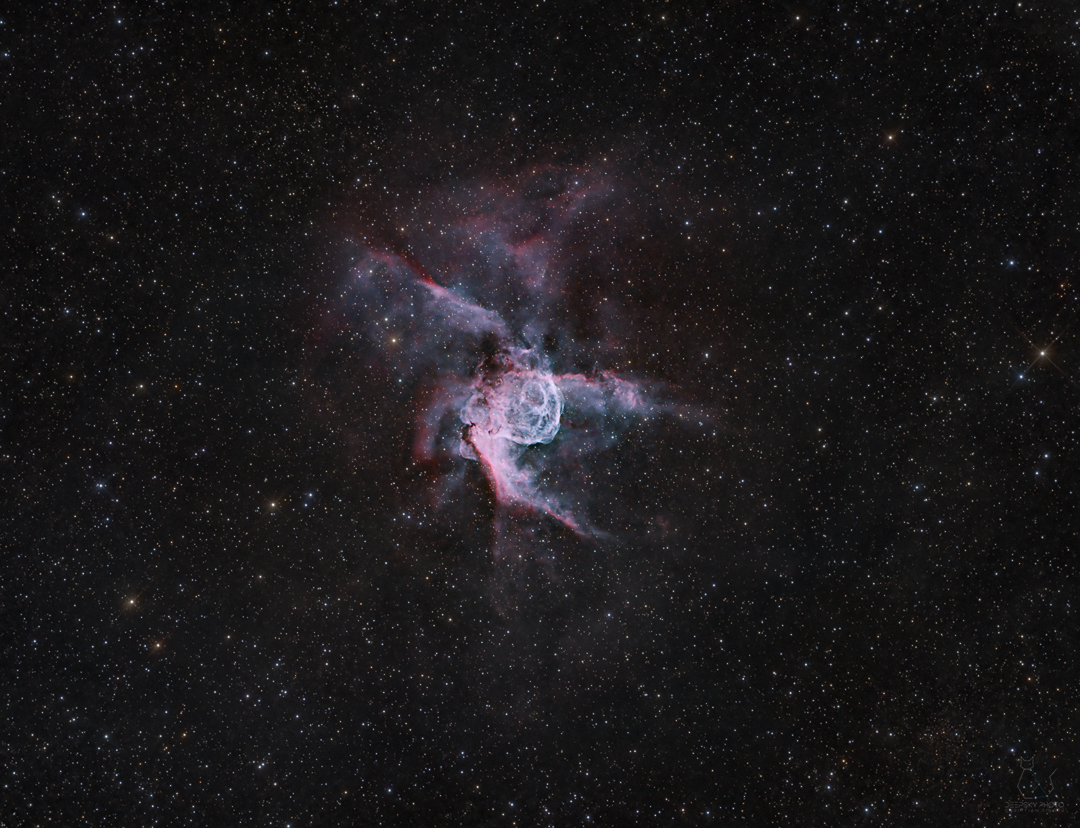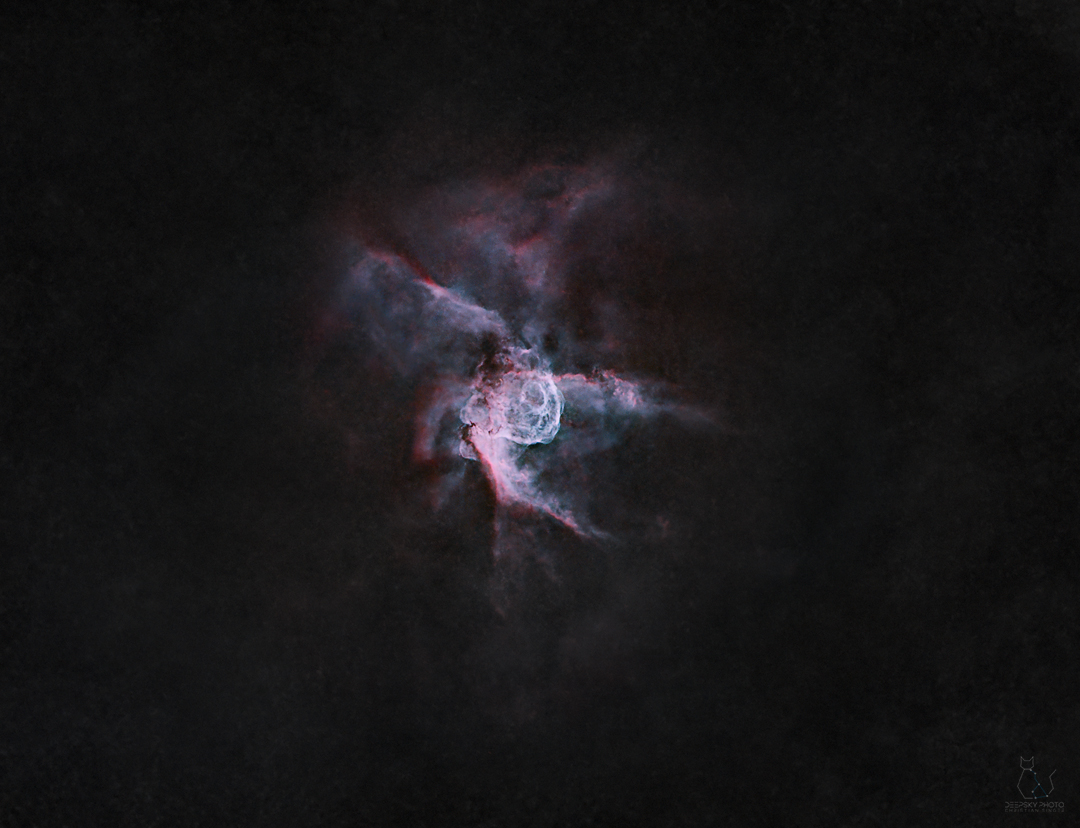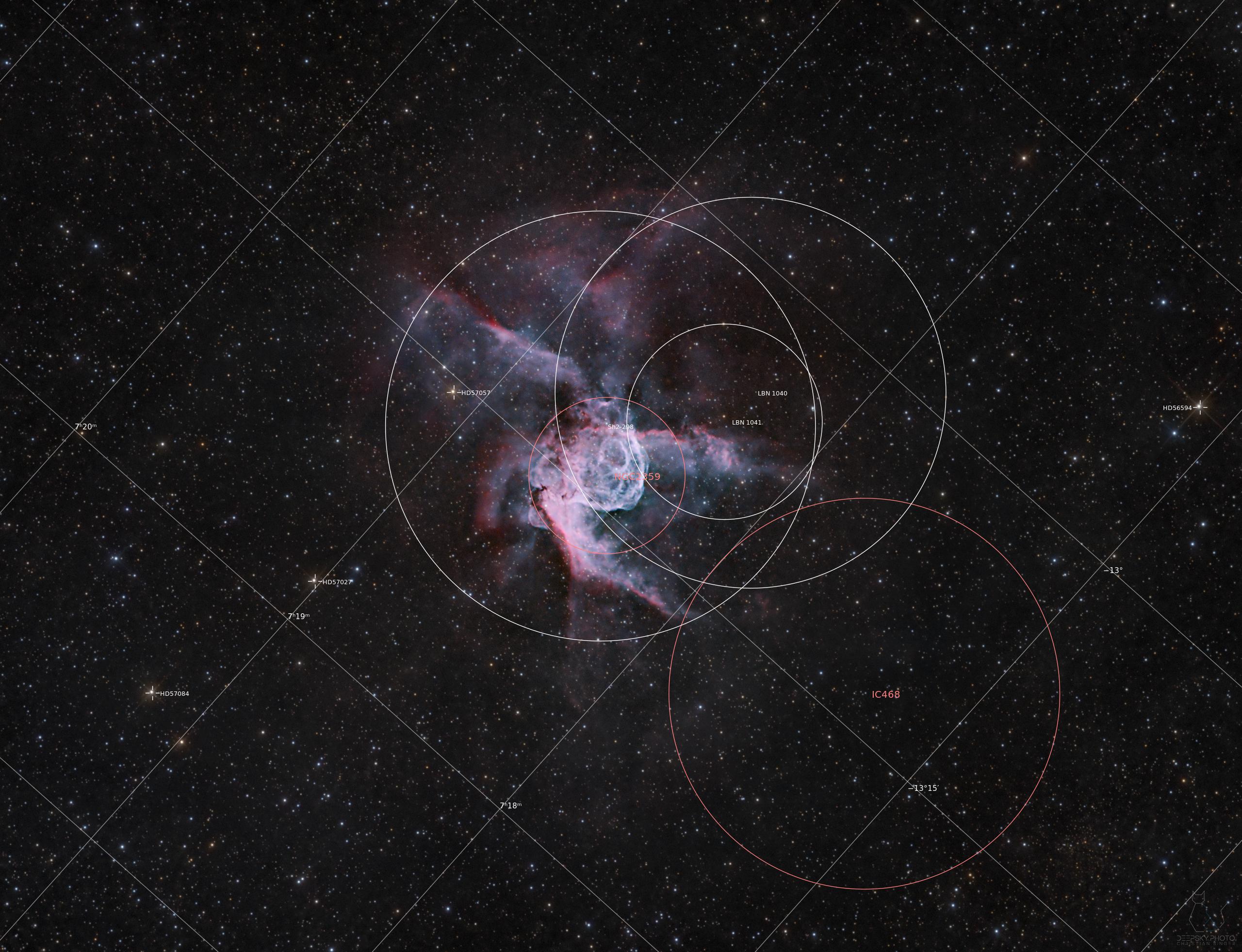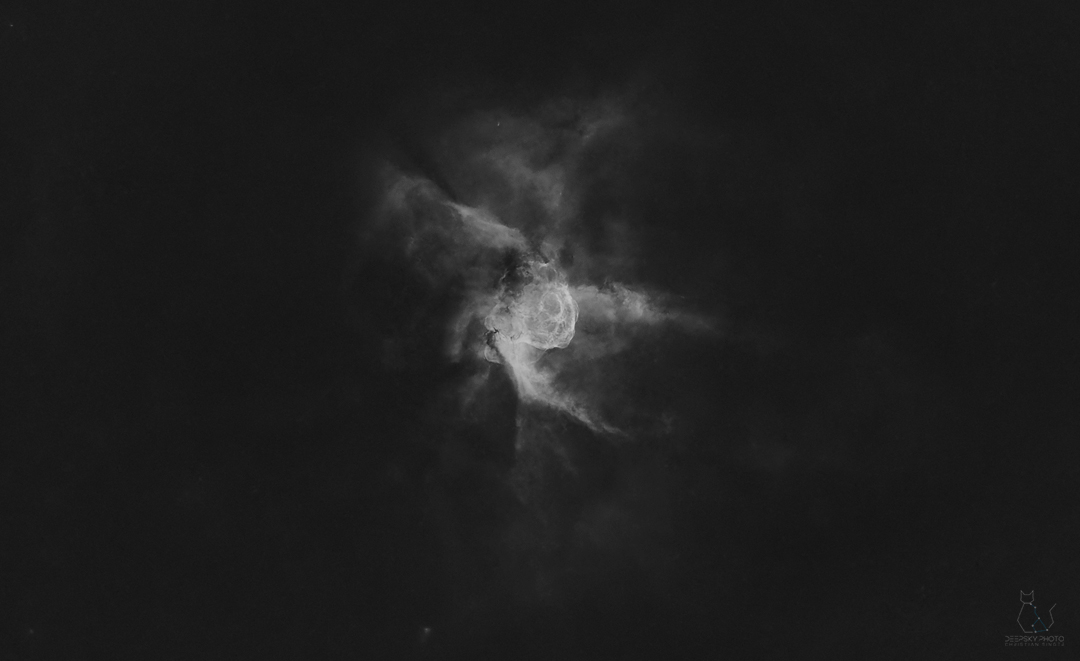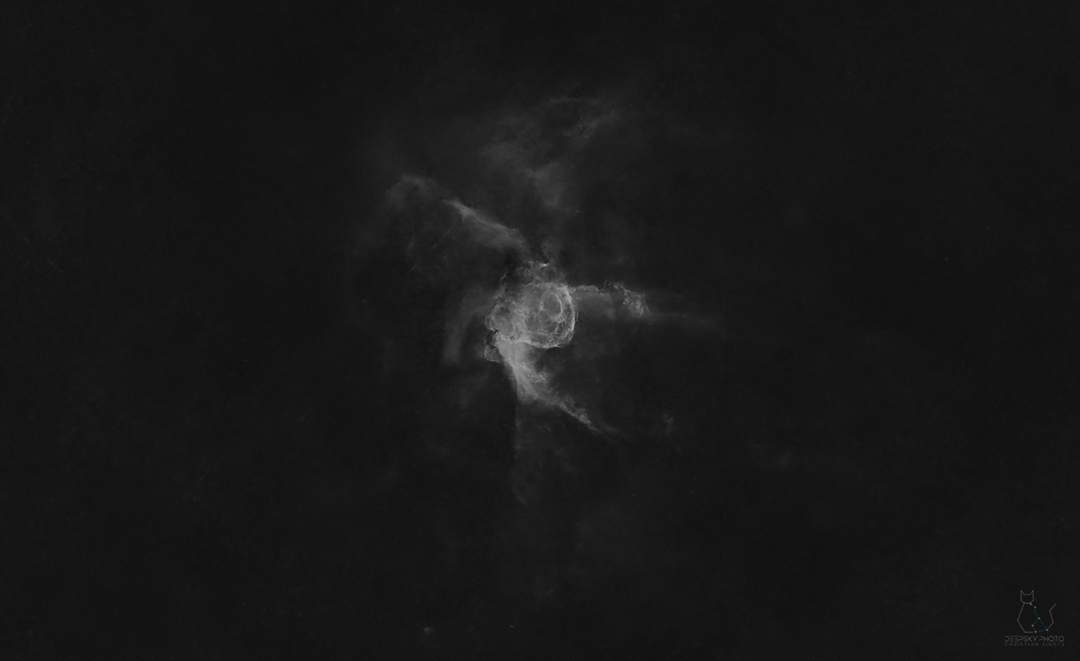Emission Nebula in constellation “Canis Major”
Project #5
NGC2359 – Object Description
NGC 2359 (also known as Thor’s Helmet) is an emission nebula in the constellation Canis Major. The nebula is approximately 15.000 light-years away and 30 light-years in size. The central star is the Wolf-Rayet star WR7, an extremely hot star thought to be in a brief pre-supernova stage of evolution. It is similar in nature to the Bubble Nebula, but interactions with a nearby large molecular cloud are thought to have contributed to the more complex shape and curved bow-shock structure of Thor’s Helmet.
It is also catalogued as Sharpless 2-298 and Gum 4.
The nebula has an overall bubble shape, but with complex filamentary structures. The nebula contains several hundred solar masses of ionised material, plus several thousand more of unionised gas. It is largely interstellar material swept up by winds from the central star, although some material does appear to be enriched with the products of fusion and is likely to come directly from the star. The expansion rate of different portions of the nebula varies from 10 km/s to at least 30 km/s, leading to age estimates of 78.500 – 236.000 years. The nebula has been studied at radio and x-ray wavelengths, but it is still unclear whether it was produced at the class O main sequence stage of development, as a red supergiant, luminous blue variable, or mainly as a Wolf-Rayet star.
NGC 2361 is a bright knot of nebulosity on one edge of the central ring of NGC 2359. (Source: Wikipedia)
NGC2359 – Project Publications
Image Publications
Please find all project-related publications for this revision below.
Image and Signal Comparisons
Standard vs. starless version;
OIIIIn astronomy, doubly ionized oxygen is the ion O2+ (O III in spectroscopic notation). Its emission forbidden lines in the visible spectrum fall primarily at the wavelength 500.7 nm, and secondarily at 495.9 nm. Concentrated levels of O III are found in diffuse and planetary nebulae. Consequently, narrow band-pass filters that isolate the 500.7 nm and 495.9 nm wavelengths of light, that correspond to green-turquoise-cyan spectral colors, are useful in observing these objects, causing them to appear at higher contrast against the filtered and consequently blacker background of space (and possibly light-polluted terrestrial atmosphere) where the frequencies of [O III] are much less pronounced. (Source: Wikipedia) More vs. HalphaH-alpha (Hα) is a deep-red visible spectral line of the hydrogen atom with a wavelength of 656.28 nm in air and 656.46 nm in vacuum. It is the first spectral line in the Balmer series and is emitted when an electron falls from a hydrogen atom's third- to second-lowest energy level. H-alpha has applications in astronomy where its emission can be observed from emission nebulae and from features in the Sun's atmosphere, including solar prominences and the chromosphere. (Source: Wikipedia) More signal;
NGC2359 – Project Details
Please find all project-related details for this revision below.
I would like to thank my friend Daniel Nimmervoll for the great workshop where the final revision above was created.
| Astrobin Link | NGC2359 / Thor’s Helmet with OSC+Dual Narrowband (HO) |
| Further Publications | spektrum.de – NGC 2359 / Thors Helm |
| Astronomical Object | NGC2359 / SH2-298 / Gum4 |
| Distance to Earth | 15.000 light years |
| Size / Diameter | 9′ x 6′ (arcmins) |
| Date(s) of Photography | February 2023 March 2023 |
| Exposure Details | Dual NB: 110 x 300″ (9h 10min) Clearglass: 33 x 180″ (1h 39min) Total: 10h 49min |
| Calibration | FlatsA "flat frame" is shot against a bright surface and contains vignetting and all the "bad" things (e.g. dust particles) that block/disturb your light train. The combination/stack of multiple flat frames is called a "Master Flat". More: 50 Dark-Flats: 50 Master-Dark |
| Equipment | Mount: Skywatcher EQ6-R PRO (the old w/o USB-interface) Telescope: Skywatcher 200PDS Newton (200mm/1000mm, f/5) Camera: Touptek DeepSky Pro 2600c (Gain: 100, Offset: 100) Clearglass Filter: Baader Clearglass 2″ Dual Narrowband Filter: Optolong L-eXtreme 2″ Corrector: Pál Gyulai GPU Komakorrektor Guiding(Auto-)Guiding is essential in astrophotography, as an un-guided mount/telescope will produce blurry images as the stars / the deepsky object will drift away. This is heavily dependent on the exposure time, so for long exposures you want to make sure to have a perfectly set up auto-guiding. More: ZWO ASI120MM + 50mm Helical GuideScope |
| Software | Observatory Automation: Sequence Generator Pro Guiding(Auto-)Guiding is essential in astrophotography, as an un-guided mount/telescope will produce blurry images as the stars / the deepsky object will drift away. This is heavily dependent on the exposure time, so for long exposures you want to make sure to have a perfectly set up auto-guiding. More: PHD Post-Processing: Astro Pixel Processor + PixInsight + Photoshop |

